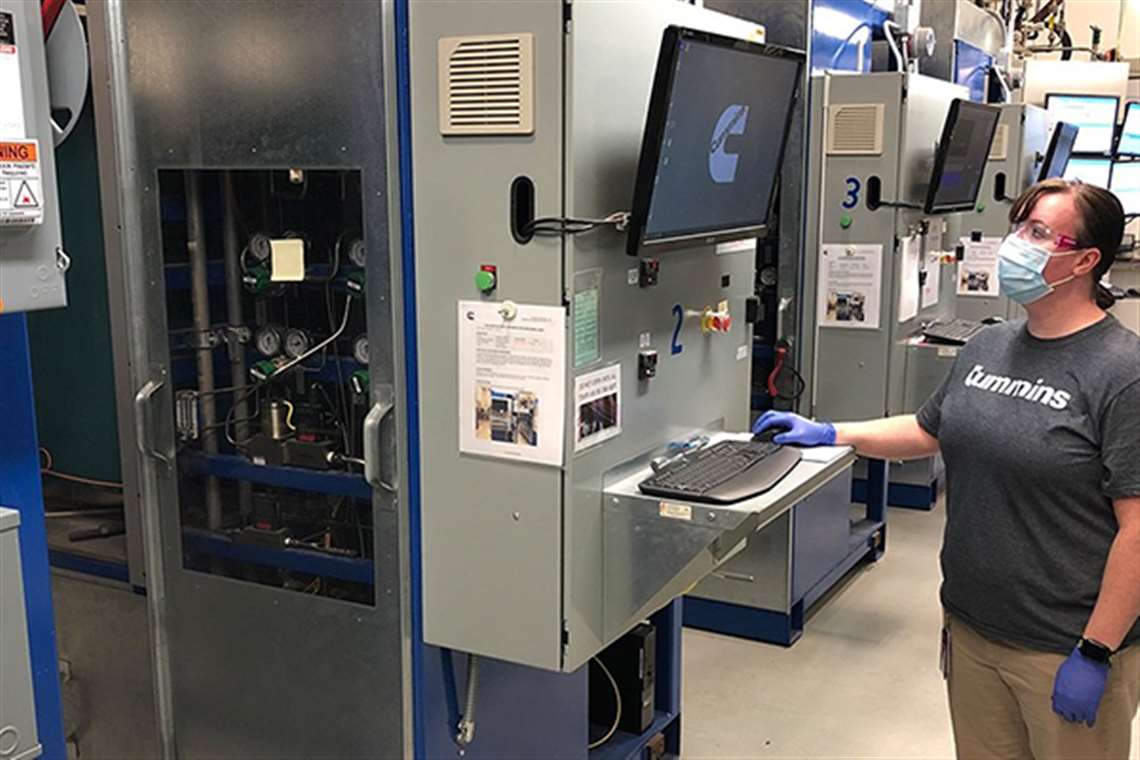Cummins Gets Federal Grants On Solid Oxide Fuel Cells
02 November 2020

Cummins Inc. has announced the company received two federal grants totaling $4.6 million to advance commercialization of solid oxide fuel cell (SOFC) technology.
SOFCs can convert fossil fuels into energy much more efficiently than combustion-based processes and can also use low- and no-carbon fuels such as hydrogen to generate power. They have the potential to be a bridge to a carbon-neutral future, Cummins said.
“We need every tool we can get to address the world’s climate challenges and other environmental issues,” said Thad Ewald, vice president of Corporate Strategy at Cummins. “Solid oxide fuel cells give our customers another way to achieve their environmental sustainability goals.”
SOFCs use a ceramic electrolyte to convert the energy in a fuel to power through a series of electrochemical reactions. With a continuous supply of fuel and oxygen, the fuel cells can be linked or stacked together to power a variety of applications.
Compared to combustion processes, SOFCs are capable of converting a significantly higher percentage of a fossil fuel’s energy into electricity while producing far less heat-trapping gases and emissions than an internal combustion engine using a petroleum-based fuel.
The grants from the U.S. Dept. of Energy (DOE) will help fund two projects demonstrating SOFCs’ potential. A $2.6 million DOE grant will help Cummins build a 20 kW small-scale SOFC power system at the University of Connecticut, fueled by natural gas but able to use multiple fuels. It will run 5000 hours to demonstrate its durability.
That’s not a big enough SOFC system to power a data center but systems can be aggregated together to provide energy resiliency, security and availability, sufficient for not only data centers but other commercial and industrial applications and microgrids.
Cummins’ proposal calls for developing a system that would be available at a price point below $1000/kW with the flexibility and robustness for use in smaller and larger systems. The proposal calls for testing to begin in 2021.
A second project funded with the help of a $2 million DOE grant will look at the cost, performance and reliability of a reversible fuel cell or R-SOFC. It can run as a traditional SOFC or as a solid oxide electrolyzer cell (SOEC) that can split steam to separate hydrogen and oxygen.
This could increase Cummins’ existing portfolio of electrolyzers to generate hydrogen, including proton exchange membrane (PEM) and alkaline technologies. The DOE grant proposal calls for building on a Cummins proprietary thermal spray technology to develop an advanced metal substrate or surface resulting in a 50% cost reduction by using less metal and cutting processing costs.
POWER SOURCING GUIDE
The trusted reference and buyer’s guide for 83 years
The original “desktop search engine,” guiding nearly 10,000 users in more than 90 countries it is the primary reference for specifications and details on all the components that go into engine systems.
Visit Now
STAY CONNECTED




Receive the information you need when you need it through our world-leading magazines, newsletters and daily briefings.
CONNECT WITH THE TEAM












